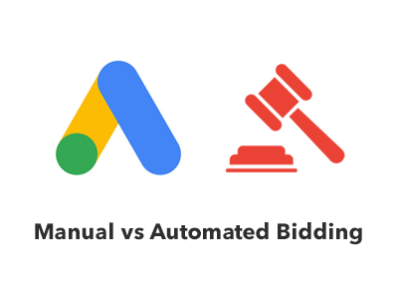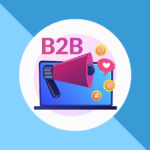Which One is Better and Why?
Automated bidding is nothing new in the pay-per-click advertising world and the debate for manual vs automated bidding has been right there with It. Google is continuously claiming these strategies are the way of the future. As Google is expanding their list of automated bidding strategy options, we can assume that they are not going away anytime soon.
But how do we know we can trust them? Better yet, how do we know if automated bidding is indeed better than manual? One article will boast about the effectiveness of automated bidding strategies, and how they need to be utilized, while another claims how quickly they can waste your money and that you need to steer clear. Our suggestion when picking the correct strategy comes down to data. Do you have enough?
What Is Manual Bidding?
Manual bidding is the method of bidding that allows the user control over the maximum amount that they spend on a single ad click without any help from Google’s AI. Manual bidding tends to be the safest strategy as you do not let Google’s AI make any wrong decisions. On the other hand, this strategy also restricts Google from making any insightful decisions. This bidding method is a lot more time consuming and operates best when the advertising manager has extensive knowledge of digital advertising.
Manual bidding tends to be the best approach in accounts that:
- Have a small budget
- Have small or niche target markets
- Target queries with low search volume
- Have less than 30 conversions a month (for conversion automated bidding strategies)
- Have an experienced account manager with time for campaign management
What Is Automated Bidding?
Automated bidding, or smart bidding, is a method of bidding that allows Google’s AI to set the bids of your ads based on the likelihood that the viewer will complete the key performance metric (whether you are targeting for clicks, conversions, return on ad spend, etc.). Smart bidding is a risker approach for advertisers. Without strategic implementation and regular monitoring, automated campaigns can easily waste ad spend or be misaligned with the goals of the campaign. But automated campaigns tend to take less time to manage. They also have the advantage of leveraging large data sets in real-time to drive bid-level optimizations that are not possible with manual bidding alone.
Automated bidding is the best approach in accounts that:
- Have a large budget
- Target queries with high search volume
- Have specific, well defined goals
- Have consistent website conversions, ideally more than 30 per month
- Have an experienced account manager who is knowledgeable and experienced with automated bidding strategies
Note – transitioning a mature, dialed-in account from manual cpc could be damaged by an automated bidding strategy.
Google Ads Automated Bid Strategies
Maximize Clicks
Maximizing clicks is a great way to increase your campaign’s click volume which works well for list building and if your website has a high conversion rate. While this bidding strategy can increase your click volume, it may end up just driving up your CPCs as this bidding strategy’s focus is also to spend your entire daily budget. It is crucial that a max CPC is set to prevent any spikes in your costs.
Maximize Conversions
Maximize conversions can be an effective way to boost website leads. As a rule of thumb, Google recommends using this bidding strategy in campaigns with 30-50 conversions a month. However, if you have more than one conversion selected for a campaign with a maximize conversions bidding strategy, Google may optimize the campaign for a conversion that is of less value. For example, if you are tracking phone calls and form submissions as conversions (but you don’t gain quality leads from phone calls), you risk the campaign being optimized on phone call conversions rather than form submissions.
Target CPA
Target CPA optimizes the campaign’s bidding to generate as many conversions as possible at your target cost per lead. This automated bidding strategy is highly effective when the campaign has good existing conversion data and has conversion goals that represent valuable business leads. This strategy is most effective for advertisers who know what their actual average cost per lead (including both online and offline costs) needs to be to turn a profit, and that cost is similar to their existing cost per conversion in Google Ads. This strategy tends to have a “learning phase” of two weeks where Google tests different factors out to see what yields the best conversions.
Target ROAS
Like target CPA, target ROAS (return-on-ad-spend) drives as many conversions as possible for your target ROAS. This strategy also requires the advertiser to know the true value of a web lead and to have sufficient conversion data in the campaign or account. Target ROAS is most successful in E-commerce campaigns, where the full value of lead is fed directly into the algorithm every time there is a conversion. Target ROAS is not a great approach for businesses focused on generating a determined volume of leads from Google Ads, but can be very useful for generating leads with a specific return.
Maximize Conversion Value
Similar to target ROAS, maximize conversion value optimizes bids based on real-time data to show ads to users most likely to generate the most revenue. This strategy is also more effective when there is a true value of a conversion, like for E-commerce websites. This strategy has the same limitations as target ROAS, and is generally used when advertisers don’t have, or are uncertain about, a target ROAS. This bidding strategy may lead you to miss out on lower value conversions, so if quantity of leads is important, this strategy is not recommended.
Target Impression Share
Target impression share’s strategy is to be seen as much as possible on Google for the keywords that you have targeted. This strategy does not have a learning period and can be implemented without account history. This approach can increase your cost-per-click , so a sufficient budget is required if you want your ads to show throughout the day. Target impression share does not factor in conversions, so it is best suited for branded campaigns and awareness campaigns where being visible in the search results is the primary goal.
Enhanced CPC
Enhanced CPC is one of the safest bid strategy of them all, a hybrid of manual bidding and automated strategies. You still set your own maximum cost-per-click, but enhanced CPC allows Google to adjust your bid in an individual auction based on individual user signals. For example, Google may increase the bid for a query that is more likely to generate a conversion and decrease the bid for a query that is less likely to convert.
Wrap-Up
Automated bidding strategies can be very powerful, if they have the proper data inputs. For advertisers who have new campaigns, small budgets, or are in niche industries with low search volume, manual bidding strategies are likely a better bidding strategy to start with. If you have good Google Ads data, and a healthy ad budget, an automated bidding strategy can perform just as well, if not better, with a lot less time commitment.
Never forget that Google Ads is ultimately created to profit Google, and they will spend your money whether it profits your business or not. Our team excels at knowing how and when to use Google Ads bidding strategies to your advantage.







